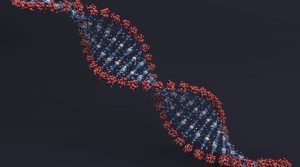Summary
The thyroid is a vital gland located in the neck. It produces thyroid hormones, which the body uses to regulate metabolism, maintain a stable body temperature, support heart and digestive system function, and ensure healthy brain and bone activity. The thyroid plays a crucial role in overall bodily functions, making its health essential for general well-being.
However, the thyroid can develop cancer when its healthy cells are overtaken by abnormal, cancerous cells. While thyroid cancer can affect individuals of all ages, it is more common in women. In the United States alone, an estimated 42,470 cases of thyroid cancer in women and 14,400 cases in men were recorded in 2017. These statistics highlight the gender disparity in thyroid cancer incidence, though the exact reason for this difference remains unclear.
The exact cause of thyroid cancer is not fully understood, though some risk factors are known to increase the likelihood of developing it. These include genetic mutations and exposure to radiation. Symptoms often include swelling or pain in the throat, a noticeable lump in the neck, changes in the voice, difficulty swallowing, and swelling of lymph nodes in the neck. Early-stage thyroid cancer can often be treated with surgery to remove the tumor. In more advanced stages, treatments such as radiation therapy and chemotherapy may be used to reduce tumor size and prevent the spread of cancer.
Table of Contents
Symptoms of Thyroid Cancer

Early-stage thyroid cancer often presents without noticeable symptoms, which makes it challenging to detect in its initial phases. However, as the cancer progresses, certain symptoms may emerge, including:
- Lump in the neck. A palpable lump or nodule may be felt under the skin in the neck area.
- Pain in the neck and throat. Discomfort or persistent pain can arise in these areas.
- Difficulty swallowing. As the cancer grows, it may cause issues with swallowing.
- Changes in voice and frequent hoarseness. A change in vocal tone or persistent hoarseness may develop as the tumor affects the vocal cords.
- Swollen lymph nodes in the neck. Enlarged lymph nodes may appear, indicating a possible spread of cancer cells.
If you notice any of these symptoms, it’s essential to consult a healthcare provider promptly. Only a medical professional can accurately diagnose and determine the specific nature of a thyroid condition.
Anyone can potentially develop thyroid cancer, though certain risk factors can increase susceptibility. These include family history of thyroid cancer, certain genetic mutations, gender (as women are more frequently affected), and exposure to radiation, particularly during childhood.
Types of Thyroid Cancer
Thyroid cancer has five primary types, each with distinct characteristics and behaviors:
- Papillary thyroid cancer. This type begins in the thyroid’s follicular cells and typically grows slowly. It is the most common type of thyroid cancer, and in advanced stages, cancerous cells can spread to nearby lymph nodes. Papillary thyroid cancer is generally treatable, especially when detected early.
- Follicular thyroid cancer. Although less common than papillary thyroid cancer, it shares some similarities. It also originates in the follicular cells and grows slowly. Unlike papillary cancer, follicular thyroid cancer rarely spreads to lymph nodes. It is the second most common type of thyroid cancer and is usually treatable.
- Hurthle cell cancer. Known as Hurthle cell carcinoma, this subtype originates from a specific type of follicular cell. It is more aggressive than other follicular cancers, with a higher likelihood of spreading to lymph nodes, which can make treatment more challenging.
- Medullary thyroid cancer (MTC). MTC originates from the thyroid’s C cells, which produce the hormone calcitonin. This cancer is often associated with inherited genetic conditions, such as multiple endocrine neoplasia type 2 (MEN2). Early detection is critical in managing MTC, as it can sometimes be prevented in genetically predisposed individuals through proactive monitoring and early treatment.
- Anaplastic thyroid cancer. This is a rare and aggressive type of thyroid cancer. It grows and spreads quickly, making it one of the hardest thyroid cancers to treat. Due to its rapid progression, effective treatment is challenging and often requires intensive therapy.
The exact cause of thyroid cancer is not fully understood, but several risk factors are linked to its development. These include genetic mutations, family history of thyroid cancer, exposure to radiation (especially during childhood), and certain inherited genetic conditions. Understanding these factors can help in early detection and may guide preventive measures in high-risk individuals.
Diagnostic Procedures for Thyroid Cancer
Diagnosing thyroid cancer involves a series of steps to accurately assess whether cancer is present, determine its type, and gauge its extent. Here are the primary diagnostic procedures for thyroid cancer:
- Physical Examination and Medical History
Diagnosis begins with a detailed physical examination where a healthcare provider checks for lumps or swelling in the neck. They’ll also ask about family and personal medical history to identify any inherited risk factors or past exposure to radiation. - Blood Tests
Blood tests assess thyroid function and hormone levels, particularly thyroid-stimulating hormone (TSH) and thyroxine (T4) levels. High or low TSH levels can indicate abnormal thyroid activity, and elevated calcitonin or carcinoembryonic antigen (CEA) levels may suggest medullary thyroid cancer. - Ultrasound Imaging
Ultrasound is a non-invasive imaging technique commonly used to visualize the thyroid. It helps detect nodules, determine their size and structure, and assess whether a nodule is solid or fluid-filled. Ultrasound also aids in identifying suspicious lymph nodes that may suggest cancer spread. - Fine-Needle Aspiration (FNA) Biopsy
An FNA biopsy is a key diagnostic tool for thyroid cancer. A thin needle is inserted into the nodule, and a sample of cells is extracted for examination under a microscope. This procedure helps determine if the nodule is benign or malignant. The biopsy may be ultrasound-guided for greater accuracy. - Molecular Testing
If the biopsy results are inconclusive, molecular testing can be performed on the biopsy sample to look for genetic mutations associated with thyroid cancer, such as BRAF, RAS, or RET mutations. These tests provide additional information for accurate diagnosis and can guide treatment decisions. - Thyroid Scan (Radioactive Iodine Scan)
This procedure involves administering a small amount of radioactive iodine, which is absorbed by thyroid cells. Cancerous thyroid cells may absorb iodine differently than healthy cells, and a scan can help identify suspicious areas. This scan is particularly useful for evaluating recurrent thyroid cancer after initial treatment. - CT Scan or MRI
CT scans or MRIs are used to determine if thyroid cancer has spread to other areas, such as the lymph nodes, lungs, or bones. These imaging techniques provide detailed cross-sectional images, allowing for a comprehensive view of tumor extent and possible metastasis. - PET Scan (Positron Emission Tomography)
A PET scan may be used in advanced cases or when other scans fail to detect the spread of cancer. This scan highlights cancerous cells in the body by detecting areas with high metabolic activity, which can indicate the presence of cancer cells beyond the thyroid gland.
These diagnostic procedures, when combined, provide a thorough assessment to confirm thyroid cancer, determine its type and stage, and guide the most effective treatment plan. Early diagnosis and accurate staging are crucial for the best possible outcome.
Complications of Untreated Thyroid Cancer
If left untreated, thyroid cancer can lead to several serious complications that affect both the thyroid gland and other parts of the body. Here are some of the primary complications associated with untreated thyroid cancer:
- Tumor growth and neck compression. As thyroid cancer progresses, the tumor can grow significantly in size. This growth may put pressure on nearby structures in the neck, including the trachea (windpipe), esophagus (food pipe), and nerves. This compression can lead to difficulty breathing, swallowing, and speaking, especially if the cancer invades the vocal cords.
- Metastasis to lymph nodes and other organs. Untreated thyroid cancer has the potential to spread, or metastasize, to nearby lymph nodes and distant organs. Lymph nodes in the neck are usually the first to be affected. Over time, the cancer can spread to other organs, particularly the lungs, liver, and bones, complicating treatment options and reducing life expectancy.
- Hormonal imbalances. As thyroid cancer progresses, it can disrupt the normal hormone production of the thyroid gland. This disruption may lead to hypothyroidism (low thyroid hormone levels), causing fatigue, weight gain, and depression, or hyperthyroidism (high thyroid hormone levels), which can lead to symptoms like rapid heartbeat, anxiety, and weight loss. These hormonal imbalances can impact overall health and quality of life.
- Paralysis of the vocal cords. If the cancer invades or puts pressure on the laryngeal nerves that control the vocal cords, it can lead to vocal cord paralysis. This complication results in hoarseness, voice loss, and breathing difficulties, which may become permanent if not treated.
- Bone pain and fractures. When thyroid cancer metastasizes to the bones, it can cause bone pain and increase the risk of fractures. This can significantly impair mobility and quality of life, making everyday activities painful and difficult.
- Hypercalcemia (high calcium levels). Advanced thyroid cancer, particularly medullary thyroid cancer, can lead to hypercalcemia or elevated calcium levels in the blood due to the excessive release of calcium from bones. Hypercalcemia can cause symptoms like nausea, confusion, and kidney stones and may become life-threatening if severe.
- Reduced life expectancy. Untreated thyroid cancer, especially aggressive types like anaplastic thyroid cancer, significantly shortens life expectancy due to rapid progression and resistance to treatment once it reaches advanced stages. Early intervention is crucial for improving survival outcomes.
These complications highlight the importance of early diagnosis and treatment for thyroid cancer. Timely intervention can prevent tumor growth, reduce the risk of metastasis, and improve the chances of long-term survival and quality of life.
Causes of Thyroid Cancer

While many factors may increase a person’s risk of thyroid cancer, the direct causes of thyroid cancer involve specific biological changes that transform normal thyroid cells into cancerous ones. These primary causes include:
- Genetic mutations in thyroid cells. Certain mutations within the DNA of thyroid cells can trigger abnormal growth. For instance, mutations in genes such as BRAF, RET, and RAS are commonly associated with various forms of thyroid cancer. These mutations prompt the thyroid cells to multiply rapidly and evade normal cellular death, leading to tumor formation and, potentially, cancer spread if left unchecked.
- Abnormal thyroid-stimulating hormone (TSH) regulation. TSH, produced by the pituitary gland, regulates the thyroid’s production of hormones. In cases where TSH is chronically elevated, it can overstimulate thyroid cells, encouraging overgrowth and potentially causing mutations. This overactivity, especially in combination with genetic predispositions, can lead to cellular changes that result in cancer.
- Chronic inflammation or autoimmune thyroid disease. Although less common, prolonged inflammation due to autoimmune conditions like Hashimoto’s thyroiditis can, over time, lead to changes in thyroid cells. While not as direct as genetic mutations, this inflammation creates an environment in which abnormal cell growth and DNA damage are more likely, sometimes resulting in thyroid cancer.
By understanding these direct cellular and molecular causes, healthcare providers can better determine high-risk individuals and potentially target treatments that address the genetic and hormonal drivers of thyroid cancer.
Prevention of Thyroid Cancer

Experts agree that the exact cause of thyroid cancer remains unknown in most cases, which also makes it challenging to provide guaranteed preventive measures, especially for those at a higher risk. While complete prevention isn’t possible, certain steps may help reduce the risk of developing thyroid cancer:
- Prophylactic surgery for high-risk individuals. Those with specific inherited gene mutations, such as mutations in the RET gene linked to medullary thyroid cancer, may opt for preventive thyroid surgery to lower their risk. This proactive approach can prevent the development of cancer in genetically predisposed individuals.
- Taking potassium iodide (KI). For people who live or work within about 10 kilometers of a nuclear plant, taking potassium iodide supplements may help protect the thyroid from absorbing radioactive iodine in case of radiation exposure. This preventive measure can reduce the risk of radiation-induced thyroid cancer, especially after exposure to high radiation levels.
- Avoiding high-radiation areas. Reducing exposure to high levels of radiation, whether occupational, medical, or environmental, is a key protective measure. Limiting time in areas with high radiation and following safety protocols in radiation-related work can help minimize risk.
While these steps do not eliminate the risk of thyroid cancer, they provide strategies to mitigate exposure to known risk factors, particularly for those in higher-risk situations.
Risk Factors for Thyroid Cancer
The following factors are known to increase the likelihood of developing thyroid cancer:
- Gender. Research indicates that thyroid cancer is more common in women than in men. This may be due to hormonal differences, though the exact reason for this disparity is still under investigation.
- Radiation exposure. High levels of radiation exposure can lead to thyroid cancer. Examples include radiation treatments for head and neck conditions and exposure from nuclear explosions. Even frequent exposure to medical X-rays, especially without protective measures, can raise the risk of developing thyroid cancer over time.
- Certain hereditary conditions. Specific inherited conditions are associated with a higher risk of thyroid cancer. These include familial medullary thyroid cancer and multiple endocrine neoplasia (MEN). Such genetic syndromes increase the likelihood of developing medullary thyroid cancer and necessitate careful monitoring and preventive care.
Thyroid cancer can lead to several complications if untreated or if it spreads. These may include difficulties with breathing or swallowing due to tumor growth, hormonal imbalances affecting bodily functions, and, in advanced stages, metastasis to other organs such as the lungs or bones, which can complicate treatment and reduce quality of life. Early diagnosis and treatment are essential to managing these potential complications effectively.
Thyroid Cancer FAQs
This FAQ provides general information about thyroid cancer. For personalized guidance, please consult a healthcare provider.
- What is thyroid cancer?
Thyroid cancer is a type of cancer that starts in the cells of the thyroid gland, located in the neck. The thyroid is responsible for producing hormones that regulate metabolism, body temperature, heart rate, and more. Cancer occurs when abnormal cells grow uncontrollably in the thyroid, forming tumors. - What causes thyroid cancer?
While the exact cause is often unknown, genetic mutations in thyroid cells and abnormal regulation of thyroid-stimulating hormone (TSH) are common direct causes. Risk factors include radiation exposure, genetic predisposition, and certain hereditary conditions. - What are the types of thyroid cancer?
There are five main types: papillary, follicular, Hurthle cell, medullary, and anaplastic thyroid cancer. Each type has unique characteristics, growth patterns, and treatment options, with papillary being the most common and anaplastic the most aggressive. - Who is most at risk for thyroid cancer?
Thyroid cancer is more common in women than in men and often affects those between the ages of 30 and 60. High-risk factors include radiation exposure, iodine deficiency, and inherited genetic syndromes, particularly those affecting hormone-producing glands. - What are the symptoms of thyroid cancer?
In the early stages, thyroid cancer may have no symptoms. As it progresses, symptoms can include a lump in the neck, neck or throat pain, difficulty swallowing, voice changes, and swollen lymph nodes in the neck. - How is thyroid cancer diagnosed?
Diagnosis typically begins with a physical examination, followed by imaging tests like ultrasound or CT scans, blood tests to assess thyroid function, and a biopsy to confirm the presence of cancerous cells in the thyroid. - Is thyroid cancer treatable?
Yes, thyroid cancer is highly treatable, especially when detected early. Treatment options may include surgery, radioactive iodine therapy, hormone therapy, radiation therapy, and, in some cases, chemotherapy or targeted drug therapy. - Can thyroid cancer spread to other parts of the body?
Yes, in advanced stages, thyroid cancer can spread to nearby lymph nodes and other organs, such as the lungs and bones. Early detection and treatment help minimize the chances of metastasis. - What are the treatment options for thyroid cancer?
Treatment varies based on the type and stage of cancer but generally includes surgery to remove the thyroid, radioactive iodine to destroy residual thyroid tissue or cancer cells, hormone replacement therapy, and sometimes radiation or chemotherapy in advanced cases. - Can thyroid cancer be prevented?
While there is no guaranteed way to prevent thyroid cancer, certain steps can reduce risk, such as limiting radiation exposure, particularly in the neck area, and considering preventive surgery if you have inherited genetic mutations linked to medullary thyroid cancer. - What is the prognosis for thyroid cancer patients?
The prognosis is generally good, especially for papillary and follicular thyroid cancers, which have high survival rates. Anaplastic thyroid cancer, however, is more aggressive and challenging to treat, affecting overall prognosis. - What follow-up care is needed after thyroid cancer treatment?
Regular follow-ups are essential to monitor for recurrence. These may include physical exams, imaging tests, and blood tests to assess thyroid hormone levels. Some patients will need lifelong thyroid hormone replacement therapy if their thyroid has been removed.


